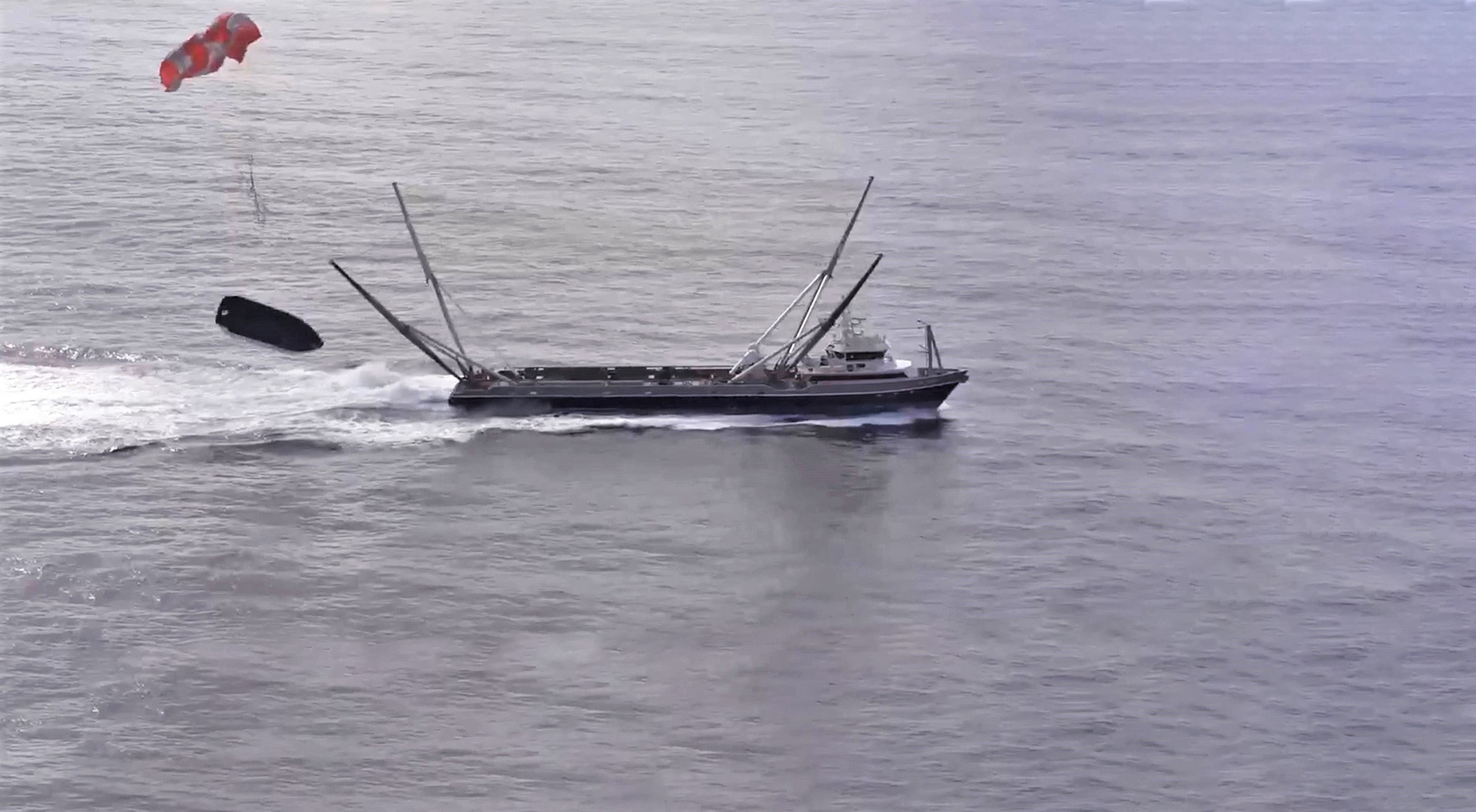
Shortly after the ship departed for the East Coast, SpaceX shared a video of one of recovery vessel Mr. Steven’s recent controlled catch tests, in which he came so close to a successful fairing recovery that his net actually bumped the nose of the fairing before it tipped over and fell into the ocean.
While agonizing to watch a fairing very literally slip through Mr. Steven’s figurative fingers, this video is primarily good news. Given how extraordinarily close Mr. Steven was to success, SpaceX engineers will almost certainly continue refining their fairing recovery technique and technology until successful catches can be reliably repeated.
Over the past four or so months, SpaceX has engaged in a program of controlled Falcon fairing drop-and-catch tests around 100 miles (160 km) off the coast of California. Prior to today’s video, one additional update was released a few weeks ago showing a separate catch test that ended in a similar but slightly bigger miss. The test shown in the new video likely occurred a few weeks ago, the second to last controlled experiment before Mr. Steven departed for Florida on the 28th. In fact, Teslarati photographer Pauline Acalin captured what is almost certainly the fairing half shown in SpaceX’s Jan 29 video, visibly cracking after impacting the ocean nose-on.
Oddly, this latest documented miss may have been caused by Mr. Steven going too fast, whereas all previous failures seem to have been more a consequence of being in the wrong place at the wrong time or unable to turn hard or fast enough to intercept the fairing half. Given that the fairing visibly touched down on the net before tilting back into the ocean, the half’s center of gravity must have been feet – if not inches – away from allowing it to tip the opposite direction and slide gently into Mr. Steven’s net. Had the ship been slowed down even a little, the story of this test may have been completely different. Nevertheless, the gap between failure and success is clearly smaller than ever before, meaning that it can probably be all but guaranteed that SpaceX will eventually close that gap on fairing recovery.
Soon to be stationed with SpaceX’s Florida-based East Coast recovery fleet, Mr. Steven should see a considerable uptick in the number of available fairing recovery attempts, with at least three new post-launch catch opportunities to come in the next two or three months. The SpaceX recovery vessel departed SpaceX’s Port of San Pedro berth on the evening of January 28th and is likely to cross the Panama Canal within a week and arrive at Port Canaveral approximately a week after that. SpaceX’s next East Coast launch is scheduled for no earlier than (NET) February 18th (8:58pm EDT), giving Mr. Steven plenty of time to switch coasts and attempt a recovery.

